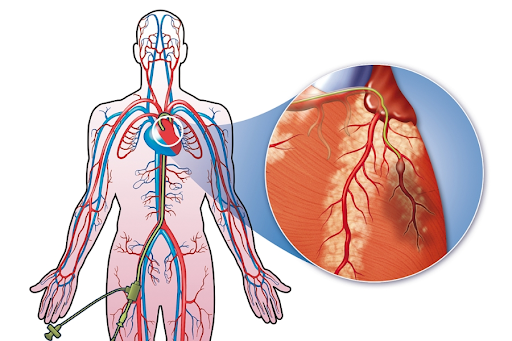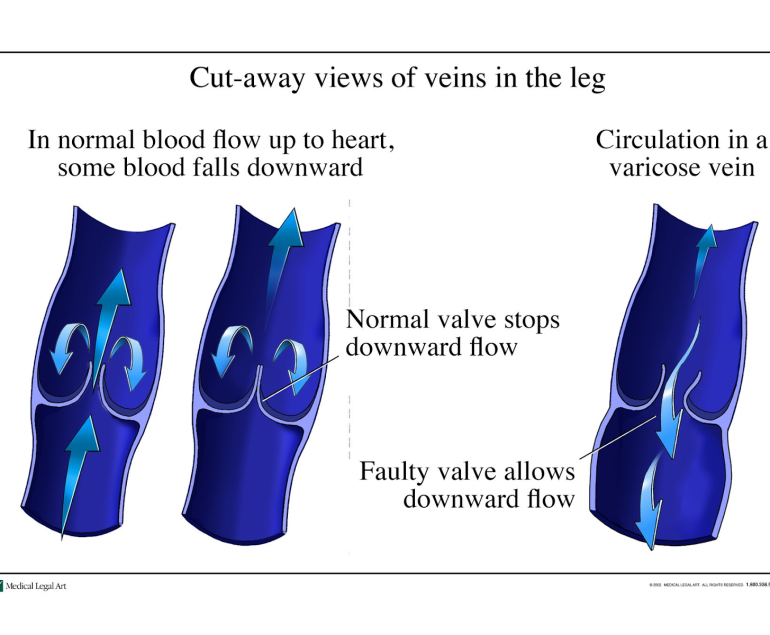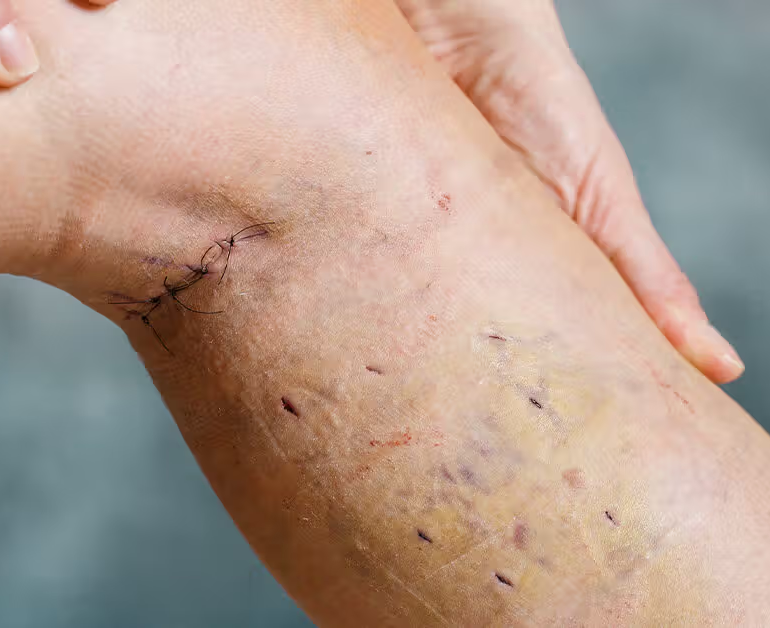Source link: https://www.ncbi.nlm.nih.gov/books/NBK531461/
Cardiac catheterization, also known as coronary angiography or coronary catheterization, is a minimally invasive procedure used to diagnose and treat various heart conditions by visualizing the coronary arteries and evaluating blood flow to the heart muscle. It involves inserting a catheter (a thin, flexible tube) into a blood vessel and threading it to the heart under X-ray guidance. Catheterization is one of the most widely performed cardiac procedures. In the United States, more than 1,000,000 cardiac catheterization procedures are performed annually.
Procedure
During cardiac catheterization, the patient is typically awake but sedated to help them relax. The procedure is performed in a specialized cardiac catheterization laboratory (cath lab) by a team of cardiologists and nurses. The following steps outline the general process of cardiac catheterization:
- Access: The cardiologist inserts a catheter into a blood vessel, usually in the groin or wrist, using a small needle and guide wire. Local anesthetic is applied to numb the insertion site.
- Guidance: The catheter is advanced through the blood vessel and guided to the heart using X-ray imaging (fluoroscopy) and contrast dye injected through the catheter. This allows the cardiologist to visualize the coronary arteries and other structures of the heart.
- Angiography: Once the catheter reaches the heart, contrast dye is injected into the coronary arteries to outline their anatomy and identify any blockages, narrowing, or abnormalities. X-ray images are captured to create angiograms, which provide detailed information about blood flow and potential obstructions.
- Measurements: In addition to visualizing the coronary arteries, the cardiologist may use special tools (such as pressure wires or intravascular ultrasound) to measure pressure gradients across blockages and assess the severity of coronary artery disease
- Interventions: If significant blockages are identified during the procedure, the cardiologist may perform additional interventions to open the blocked arteries and restore blood flow. This may involve balloon angioplasty to widen the narrowed artery and placement of a stent to keep the artery open.
- Closure: After the procedure is complete, the catheter is removed, and pressure is applied to the insertion site to prevent bleeding. A bandage or closure device may be used to seal the puncture site.
Uses of Cardiac Catheterization
Cardiac catheterization is used for various diagnostic and interventional purposes, including:
- Diagnosing Coronary Artery Disease (CAD): Cardiac catheterization provides detailed images of the coronary arteries and helps identify blockages or narrowing that may be causing symptoms such as chest pain or shortness of breath.
- Assessing Heart Function: Cardiac catheterization allows for measurement of pressures within the heart chambers and assessment of cardiac function in patients with heart failure or other cardiac conditions.
- Guiding Interventions: Cardiac catheterization is used to guide interventional procedures such as angioplasty, stent placement, or valve repair or replacement.
- Identifying Structural Heart Abnormalities: Cardiac catheterization can help diagnose and evaluate structural heart abnormalities such as congenital heart defects, valve disorders, or abnormal connections between blood vessels.
Risks and Considerations
Cardiac catheterization is generally safe, but it carries some risks, including:
1. Mortality:
- Risk is Under 0.1%. Risk Factors for increased mortality: Advanced age, higher New York Heart Association heart failure class, left main coronary artery disease, severe left ventricular dysfunction, valvular heart disease, chronic kidney disease, diabetes mellitus requiring insulin therapy, peripheral artery disease, cerebrovascular disease, and severe pulmonary disease.
2. Myocardial Infarction:
- Risk: Under 0.1% Risk Factors for MI: Extent of disease, insulin-dependent diabetes mellitus, recent non-ST elevation myocardial infarction.
3. Stroke:
- Risk: 0.2% to 0.4%
- Risk Factors for CVA: Severity of coronary artery disease, length of fluoroscopy time, diabetes, hypertension, prior stroke, or renal failure.
4. Local Vascular Complications:
- Common issues at the catheter insertion site include acute thrombosis, distal embolization, dissection, poorly controlled bleeding, hematoma, retroperitoneal hemorrhage, pseudoaneurysm, and arteriovenous fistula.
Other Potentially Serious Complications:
- Ventricular Tachyarrhythmias
- Severe Bradycardia
- Allergic Reactions
- Atheroembolism
- Acute Kidney Injury (contrast nephropathy)
Risk-to-Benefit Ratio:
Despite these risks, the risk-to-benefit ratio remains favorable for diagnostic cardiac catheterization, particularly for evaluating potentially fatal or lifestyle-limiting cardiac diseases.
Conclusion
Cardiac catheterization is a valuable diagnostic and interventional procedure in cardiology, providing detailed information about the heart’s anatomy, function, and blood flow. When performed by experienced cardiologists in specialized catheterization laboratories, cardiac catheterization can help diagnose and treat various heart conditions, improve patient outcomes, and guide treatment decisions.



